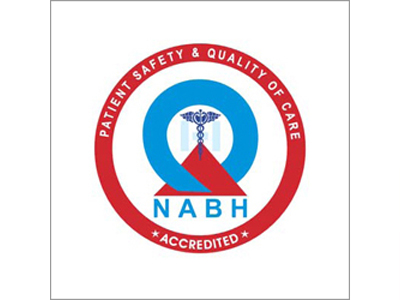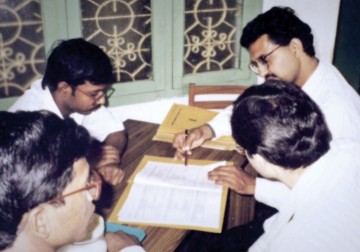In a new study from LVPEI, Drs. Rohit Khanna, Nikhil Choudhari, Srinivas Marmamula and others report the 15-year incidence rate of primary open angle glaucoma in the Andhra Pradesh Eye Disease Study (APEDS) cohort.
Glaucoma is a stealthy, blinding disorder. It has no external symptoms and is characterized by gradual damage to the optic nerve and a slowly constricting visual field. Primary open angle glaucoma (POAG) is the most common sub-type of this condition, where the eye’s frontal fluid drainage canals are blocked, leading to increasing intraocular pressure (IOP). The condition has no single cause and factors like age, family history, systemic conditions like diabetes and hypertension, etc. can precipitate it. Glaucoma reduces a person’s quality of life and increases their risk of falling or other accidents. It is the third biggest cause of global blindness, yet, it is not fully understood, and its incidence is underreported the world over.
Periodic, comprehensive eye examinations are the only way to detect glaucoma in its initial stages. But few people in India receive regular eye exams, and so, our understanding of the scale of glaucoma is under-reported. This necessitates population-scale screening to detect new glaucoma cases in the country. The Andhra Pradesh Eye Disease Study (APEDS), a large-scale, population-based longitudinal study in southern India by LVPEI, reported on glaucoma prevalence in two South Indian states. The 15-year follow-up of the study (APEDS III, 2012-2016) included data on glaucoma. As APEDS has data from two time-slices 15 years apart, it is possible to assess the incidence of glaucoma over time in this population.
In a new study published in the journal Eye, Drs. Rohit C. Khanna, Nikhil S. Choudhari, Srinivas Marmamula and others from LVPEI do just that by reporting on the 15-year incidence rate of POAG in the APEDS cohort. Among the 2790 rural participants (aged 40 years or more) from APEDS I (1996-2000), 1241 (44.4%) were included in this study (2012-2016). The study cohort had a mean age of 50 years and over half of them were women (53%). The participants received a comprehensive eye examination, which included analyzing the mean IOP of both eyes.
Overall, 36 participants developed POAG over the 15 years since APEDS I. Nearly half of them (47%) had POAG in both eyes. The 15-year incidence of POAG was 2.9% or 0.2% per year. The team also saw a significant reduction in mean IOP of both eyes between APEDS I and III. Mean IOP is expected to come down with increasing age. However, in this cohort, mean IOP reduction was much less pronounced in participants with POAG (-0.75) than those without (-2.5). This study shows that along with age and ethnicity, the longitudinal changes in mean IOP can be a novel risk factor for POAG in Indians.
'Assessing the incidence of glaucoma helps us gain insights on this condition in our population and helps plan long-term strategies,’ says Dr. Srinivas Marmamula, the Network Associate Director for Public Health Research and Training at LVPEI and the third author of the paper. ‘This kind of granular insight is possible because of the high-quality APEDS longitudinal data. We hope this paper will extend our understanding of this complex condition and its presentation in India.
Citation
Choudhari NS, Khanna RC, Marmamula S, et al. Incidence of primary open angle glaucoma in the Andhra Pradesh Eye Disease Study (APEDS). Eye (Lond). Published online November 15, 2023.



